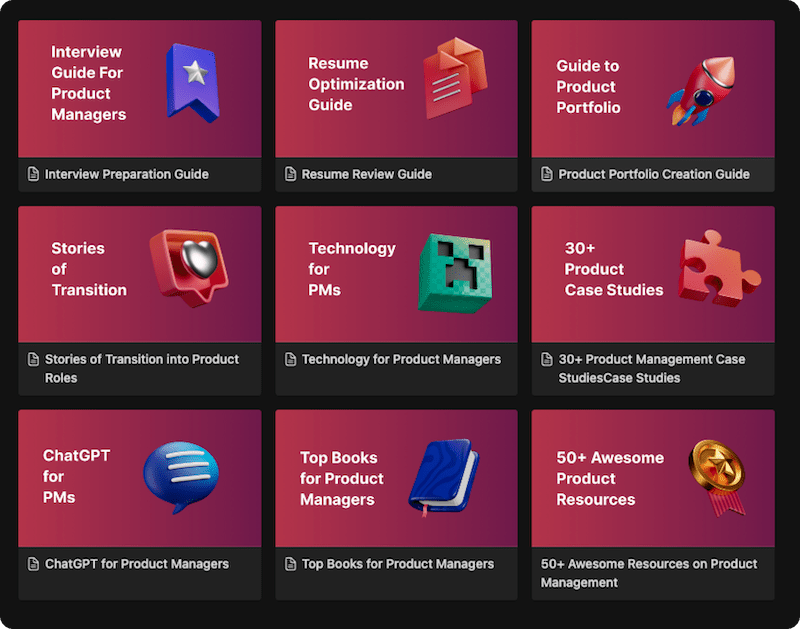Think about the manager of a successful physical retail store. They don’t just stock the shelves. They obsess over the entire customer experience: the appeal of the window displays, the logic of the store layout, the clarity of the aisle signs, the helpfulness of the staff, and the speed of the checkout line. Every detail is designed to guide customers from the front door to a successful purchase. So, who is responsible for this in the vast, complex world of online shopping? That person is an E-commerce Product Manager.
E-commerce Product Management is a specialized and dynamic discipline that treats the entire digital storefront-the website or app-as the product. It’s a unique role that blends the art of retail merchandising with the science of data-driven product optimization. An E-commerce PM is the architect, the store manager, and the relentless optimizer of the digital shopping journey.
This guide will walk you through every aisle of this exciting field. We’ll explore what makes the role unique, the critical metrics that E-commerce PMs live and breathe, a framework for optimizing the shopping funnel, and how this role differs from its more traditional software counterparts.
Definition & Origin
The role of the E-commerce Product Manager evolved alongside the growth of online retail in the late 1990s and early 2000s. As companies like Amazon and eBay scaled, they recognized that their websites were not just simple catalogs; they were complex, dynamic software products that required dedicated, strategic management.
This new breed of product manager needed to blend traditional retail knowledge with a deep understanding of user experience (UX), data analytics, and A/B testing. The discipline has since become a cornerstone of any serious online retail operation, from global marketplaces to direct-to-consumer (DTC) brands.
Benefits & Use-Cases: Why E-commerce Needs Dedicated PMs
Having a dedicated E-commerce Product Manager is critical for any online retailer looking to compete and grow.
- Directly Drives Revenue: Nearly every task an E-commerce PM undertakes, from improving site search to streamlining checkout, has a direct and measurable impact on key revenue metrics like conversion rate and average order value.
- Improves the Customer Experience (CX): By obsessing over the shopping journey, they create a more intuitive, seamless, and enjoyable experience, which leads to higher customer satisfaction and loyalty.
- Increases Conversion Rates: Their primary goal is to identify why users are dropping off and implement solutions to fix those leaks, converting more browsers into buyers.
- Reduces Cart Abandonment: They are laser-focused on optimizing the cart and checkout process-the highest-leverage area for boosting revenue.
- Provides a Data-Driven Approach to Retail: E-commerce PMs replace guesswork with data. They use analytics and A-B testing to make evidence-based decisions that improve the performance of the digital store.
How It Works: The E-commerce PM’s Playbook for Optimizing the Funnel
The work of an E-commerce PM can be best understood by looking at their role in optimizing each stage of the core e-commerce conversion funnel.
1. Optimizing Discovery
This is the “top of the funnel,” where a customer finds your products. The PM’s job is to make this process as fast and relevant as possible.
- Key Levers: On-site search algorithms, category navigation, filtering and sorting options, and SEO for product pages.
- Example Task: An E-commerce PM might notice in the data that users who use the search bar convert at a higher rate. They would then prioritize a project to improve the search algorithm with features like auto-complete and visual search to make it even more effective.
2. Perfecting the Product Detail Page (PDP)
The PDP is your digital salesperson. This is where the customer makes the critical decision to add a product to their cart.
- Key Levers: High-quality product images and videos, compelling product descriptions, clear pricing and shipping information, customer reviews and social proof.
- Example Task: A PM might run an A/B test on the “Add to Cart” button, testing different colors, sizes, and text to see which version drives the highest conversion rate.
3. Streamlining the Checkout Flow
This is where the most money is won or lost. Even a small amount of friction here can lead to millions in lost revenue from abandoned carts.
- Key Levers: Guest checkout options, simple form fields, a variety of payment options (including digital wallets like Apple Pay and Shop Pay), and clear progress indicators.
- Example Task: An E-commerce PM might champion a project to implement a one-click checkout option for returning customers, drastically reducing the steps required to make a repeat purchase.
4. Managing the Post-Purchase Experience
The journey doesn’t end at “Purchase.” The post-purchase experience is critical for building loyalty and encouraging repeat business.
- Key Levers: Order confirmation emails, shipping notifications and tracking pages, and a simple, hassle-free returns process.
- Example Task: A PM might work on designing a new self-service returns portal to make the process easier for customers and more efficient for the business.
Mistakes to Avoid: Common E-commerce Pitfalls
- Focusing Only on the Homepage: The homepage gets a lot of attention, but most converting traffic lands directly on category or product detail pages.
- Ignoring the Mobile Experience: For most retailers, a majority of traffic and a significant portion of sales come from mobile devices. A clunky mobile experience is a revenue killer.
- Slow Site Speed: Every millisecond of load time matters. Slow pages, especially on the PDP and during checkout, directly correlate with higher bounce rates and lower conversions.
- Overly Complicated Checkout: Forcing users to create an account, asking for too much information, or having a multi-page checkout process are the biggest drivers of cart abandonment.
- Not A/B Testing: Making changes based on opinion (“I think a green button looks better”) instead of data is a recipe for failure.
Examples & Case Studies: E-commerce PM in Action
The best e-commerce sites are a testament to excellent product management.
Amazon is the ultimate example. Their E-commerce PMs are famous for their relentless, data-driven optimization. The invention of 1-Click Ordering was a monumental product management achievement that removed nearly all friction from the checkout process for returning customers, dramatically boosting conversion and LTV. Features like customer reviews with photos, “Frequently Bought Together” recommendations, and the “Subscribe & Save” option are all PM-driven initiatives designed to increase AOV and customer loyalty.
A fashion retailer like ASOS demonstrates great product management in the discovery phase. They understand their audience is highly visual. Their investment in features like Visual Search (allowing a user to upload a photo to find similar items) is a brilliant product decision that directly addresses a core user need and provides a powerful competitive differentiator.
The rise of Shopify and its ecosystem is another great example. The Shop Pay feature is a product managed to benefit the entire ecosystem of millions of merchants. By creating a unified, one-click checkout experience that works across all Shopify stores, their product team solved a massive friction point for hundreds of millions of shoppers, increasing conversion rates for every merchant on their platform.
Related Concepts & Comparisons
E-commerce PM vs. SaaS PM: The Critical Differences
While they share the “Product Manager” title, the day-to-day reality of these two roles is very different.
| Aspect | E-commerce Product Manager | SaaS Product Manager |
| Primary Goal | Maximize revenue and transactional efficiency. | Maximize user engagement and long-term retention. |
| Key Metrics | Conversion Rate, Average Order Value (AOV), Cart Abandonment. | Daily/Monthly Active Users (DAU/MAU), Churn Rate, LTV. |
| Pace & Cycle | Very fast. Daily and even hourly data monitoring. A/B tests can run for days. | Slower. Data is often analyzed monthly or quarterly. Iteration cycles are longer. |
| User Relationship | Often transactional and short-term. | Often a long-term, subscription-based relationship. |
| Core Focus | Optimizing the conversion funnel. | Driving feature adoption and solving workflow problems. |
Conclusion
We began by envisioning the E-commerce Product Manager as the meticulous manager of a bustling digital store. This role is a unique and challenging fusion of classic retail intuition, deep data analysis, and user-centric product strategy. They are the ultimate owner of the customer’s journey from the digital window display to the checkout counter.
The core obsession of the E-commerce PM is the relentless pursuit of a frictionless experience. Every click saved, every moment of confusion clarified, and every second of load time shaved off is a direct and measurable victory that translates into higher conversion, bigger orders, and happier customers. Their work is a high-stakes, fast-paced cycle of hypothesis, testing, and data-driven iteration.
As the line between digital and physical retail continues to blur, the role of the E-commerce Product Manager as the architect of the modern shopping experience has never been more critical. They are the innovators who are not just selling products, but are constantly reinventing the very act of shopping itself.
FAQ’s
The main difference is their primary goal. An E-commerce PM is laser-focused on optimizing the transactional funnel to drive immediate revenue, using metrics like conversion rate and AOV. A SaaS PM is focused on driving long-term user engagement and retention within a software product, using metrics like DAU/MAU and churn.
The holy trinity of E-commerce PM metrics are Conversion Rate (the percentage of visitors who buy), Average Order Value (AOV) (the average amount spent per order), and Cart Abandonment Rate (the percentage of users who add to cart but don’t buy).
PDP stands for Product Detail Page. This is the page on an e-commerce site dedicated to a single product, showing images, descriptions, price, reviews, and the “Add to Cart” button. It is one of the most critical pages for an E-commerce PM to optimize.
While a deep coding background isn’t always required, a strong technical literacy is very important. You need to understand how e-commerce platforms work, the importance of site speed, and be able to have intelligent conversations with engineers about topics like APIs and page load times.
They use a wide range of tools, including web analytics platforms (like Google Analytics), A/B testing tools (like Optimizely or VWO), user behavior tools (like Hotjar or FullStory), and project management tools (like Jira or Asana).
Success is almost always measured by the direct impact on key business metrics. A successful E-commerce PM can clearly state, “My initiative to simplify the checkout process increased our overall conversion rate by 5% and generated an additional $2M in revenue last quarter.”
Learn better with active recall quiz
How well do you know What does an E-commerce Product manager do? Let’s find out with this quick quiz! (just 10 questions)


